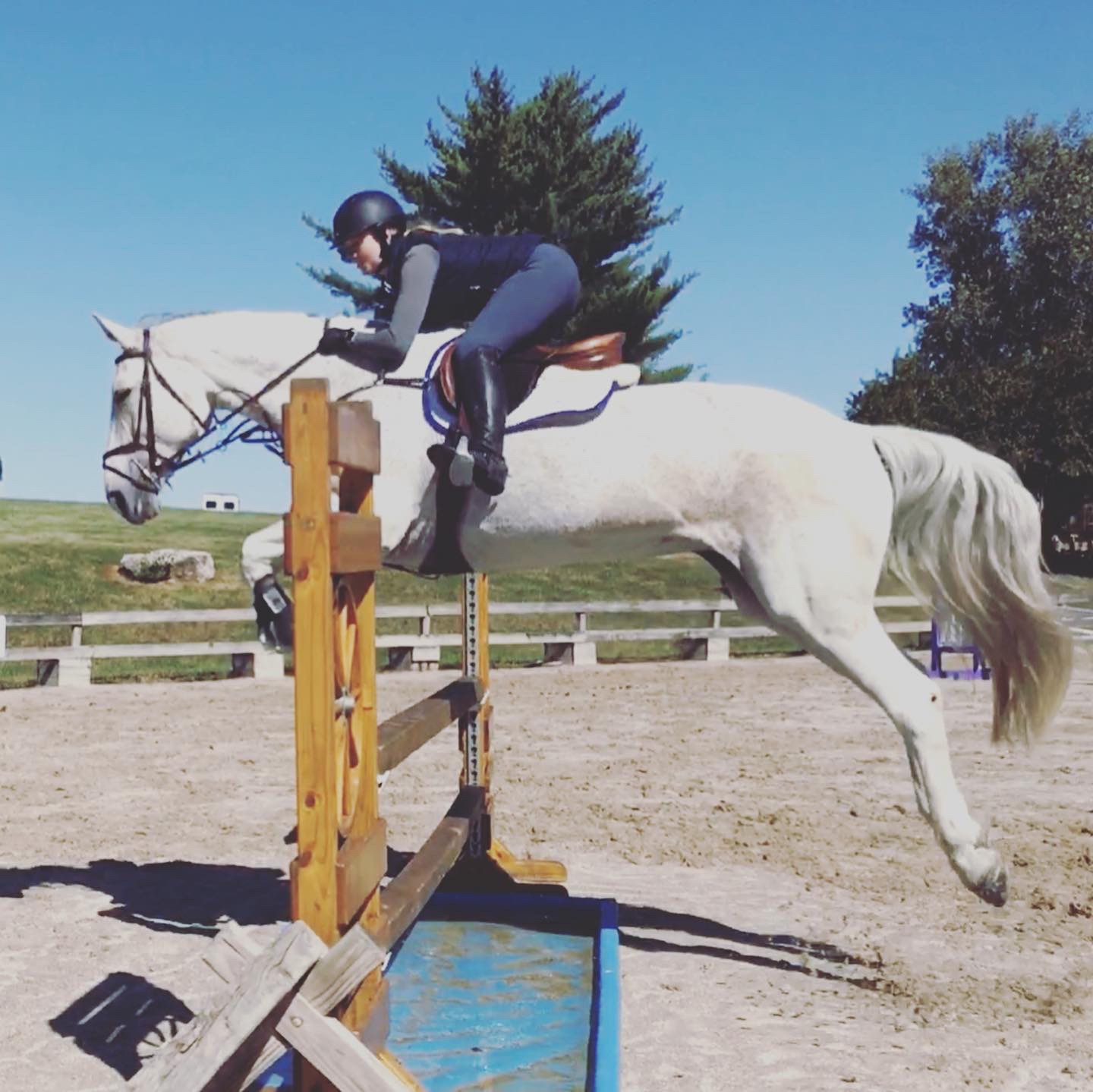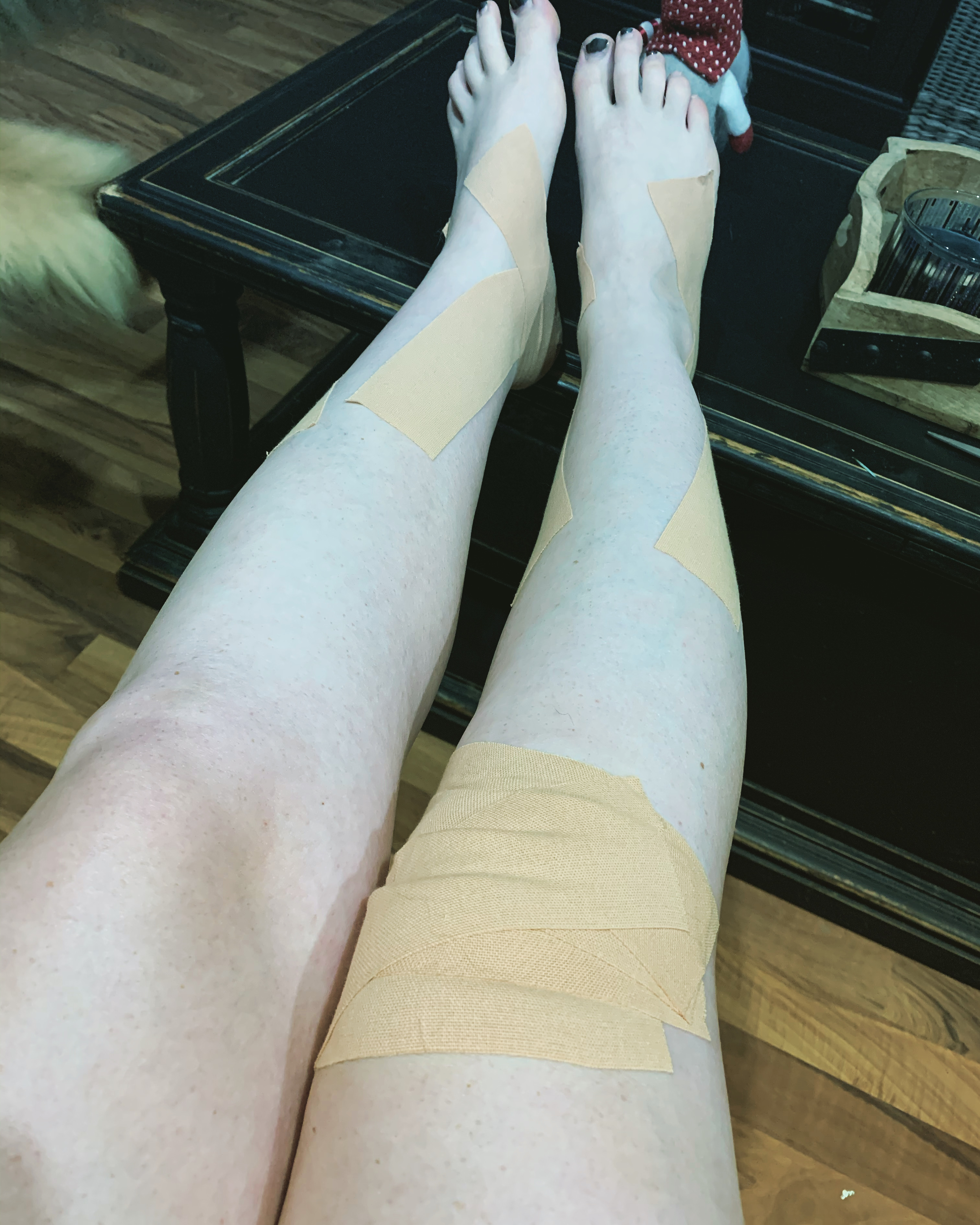I can remember it clearly. I had just returned to riding after a two-year hiatus when that dreadful feeling in my ankles returned on my fourth or fifth ride. No matter what I did, the pain would not go away. I felt as if my ankles were flopping around in my irons; however, my feet were still. Every canter stride sent excruciating pain through my ankles as I tried to grimace my way through the lesson. I looked at my trainer at the time and said, “something isn’t right. I can feel my ankles flopping.”
So they began filming me, zooming in on my ankles, only to pull me to the center of the ring and show me that nothing was physically wrong. My ankles were fine.
“I think you should just ride through it,” they said. And so ride through it I did.
Fast-forward five years later, and that pain continued to rear its ugly head sporadically. I could go months without issues, and then one day, I would mount up and know within five minutes that it was back. Only now, it was worse.

The pain would get so bad that I could barely trudge through a lesson with my sweet Rumba girl. Photo by Meagan DeLisle
In my defense, my ankles have always been less than satisfactory at doing their one job… you know… holding my skeletal system together. I first tore the ligament in my right ankle when I was ten. I was running around the campgrounds at 4-H camp when I stumbled and rolled my ankle. I couldn’t walk for days, but the camp nurse told my parents it was nothing more than a simple sprain. Two weeks, one cast, and a stern lecture from my podiatrist later, I was given one task: take it easy with the ankles.
A year and a half after my first injury, I would re-injure my same ankle, this time playing volleyball. My whole high school career was spent sporting an ankle brace until I got the all-clear to compete without wearing one. But I healed back up to semi-decent condition and was told that I should have zero limitations.
Yet here I was, crying quietly as I limped away from the ring after just ten minutes of flatwork left me feeling completely unstable in my ankles.
“I’m sorry,” I said quietly to my coach. “I just can’t do it.”
I had told her on a handful of occasions about my ankle issues, but they were so sporadic we both didn’t pay them much attention. By this point in my life, I was almost trained to brush it off by everyone around me. But not anymore. I was untacking Rumba in the aisle way when my trainer approached me and said, “I don’t know what is wrong with your ankles, but it is not normal. You need to go see a doctor. Now.”
With the fear of being unable to ride through my first ever winter circuit in Florida looming over my head, I begrudgingly made my way to the orthopedic surgeon of my choosing. I researched and researched and researched before I found Dr. McPherron, but once I did, I knew he was the doc for me. He has spent his entire career in sports medicine, and even practiced in Tryon during the WEG. He knew enough about equestrian sports, but that wasn’t good enough for him. He wanted to watch photos and videos to see the biomechanic impact of my sport on my body. And then he did his evaluation.
Do you know what he said to me? And I quote, “You have some of the worst ankles I have ever seen on a person your age.”
Basically, my ligaments were useless. They were hanging around in my ankles like overstretched rubber bands. They were doing nothing to help stabilize me, and when put under stress, *cough cough* riding, they would just give out because they were too weak to hold my body together. My team of medical professionals informed me that my ankles were so compromised that I was at risk of breaking not one, but both ankles by just walking on uneven surfaces. The clicking sound, the pain, the flopping feeling, everything I had preached to countless trainers over the years finally made sense: I wasn’t okay.
Surgery was not off the table, but Dr. McPherron wanted to give me the chance to improve my strength through physical therapy prior to rushing straight to the operation table. So I was prescribed two long months of HARD physical therapy. My therapists were, again, amazing. They researched how jumping could impact my ankles and then build exercises to strengthen me so that riding wasn’t a challenge. They taught me how to tape myself, and KT tape became my new best friend. They drilled me after every ride, every show, to make sure that I wasn’t hurting anymore. They were wonderful. I am so thankful for them and Dr. McPherron.

Pale legs and tons of KT tape. You can’t get more stereotypical #equestrianproblems than this. Photo by Meagan DeLisle
And yesterday, after two grueling months of therapy, I graduated. My ankles had miraculously doubled in strength. While they are still not perfect, they are good enough for me to make the trek to Florida to compete, as long as I am doing my conditioning exercises at home and using the KT tape when I ride.
As I drove away from the physical therapy clinic for, hopefully, the last time today it hit me: I had known all along that there had been an issue. But I had allowed people to tell me to power through it and forget it was there. Had I gone to the doctor five years ago, would I have prevented things from getting this bad? I will never know the answer to that completely, but I can only assume that my ankles have gotten worse over time.
Our sport takes a toll on our bodies. Not only are our falls risky, but we put our bodies through intense exercises each time we ride. You are the only one who knows your body. You are the only one who can be an advocate for your pain. And after all of this, I have come to one conclusion: we can never be told to just ride through something that makes us physically uncomfortable. If your body is telling you no, then you need to get help. Seek the help of a qualified medical professional to find out what is wrong and help you address it before it becomes the reason you can’t do what you love most anymore. And if your trainer is encouraging you to ignore the signs, it is time for you to find a new trainer. I am so thankful to my current trainer for helping me to realize that I NEEDED medical help.
As for now, me and my crappy ankles are going to do my homework religiously to maintain the progress that I have made over the past two months. And the next time I know something isn’t right, I am not going to let someone convince me that I am wrong.
